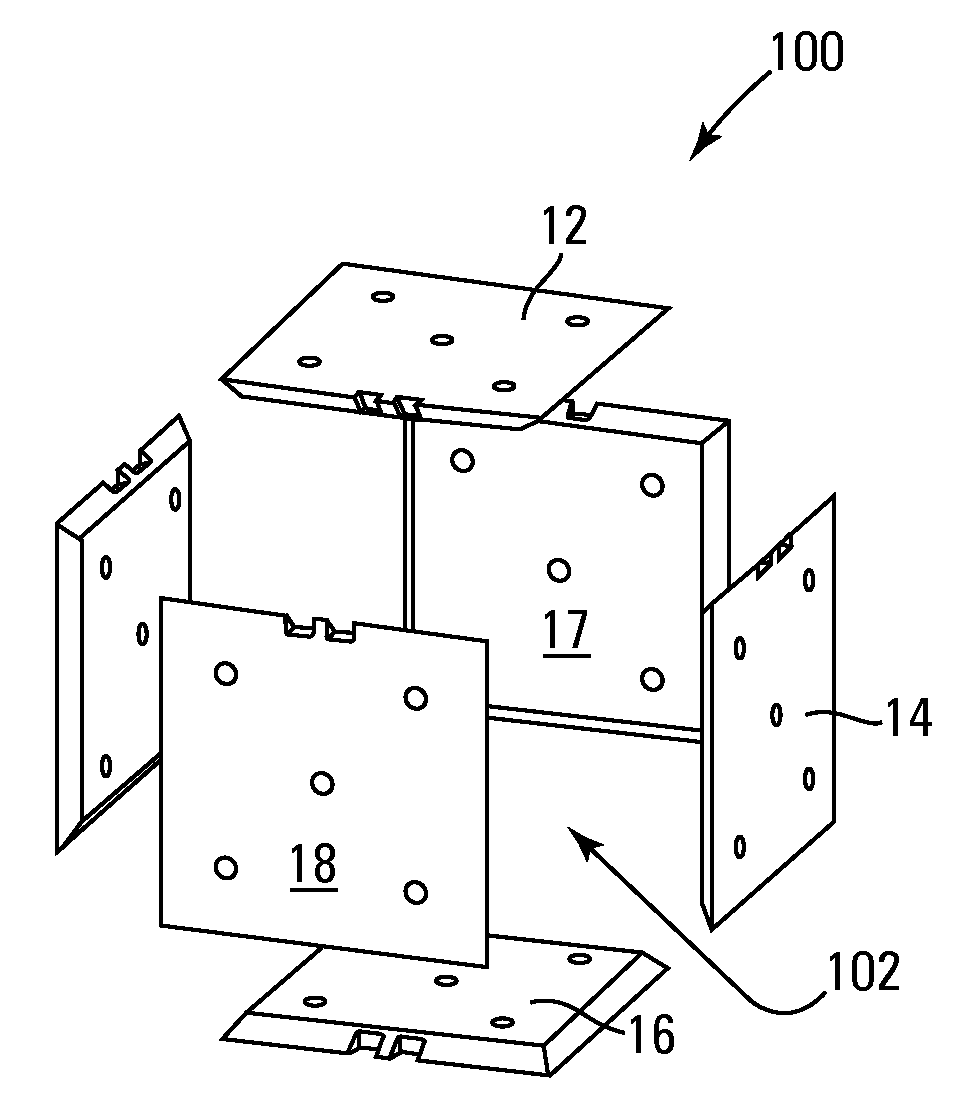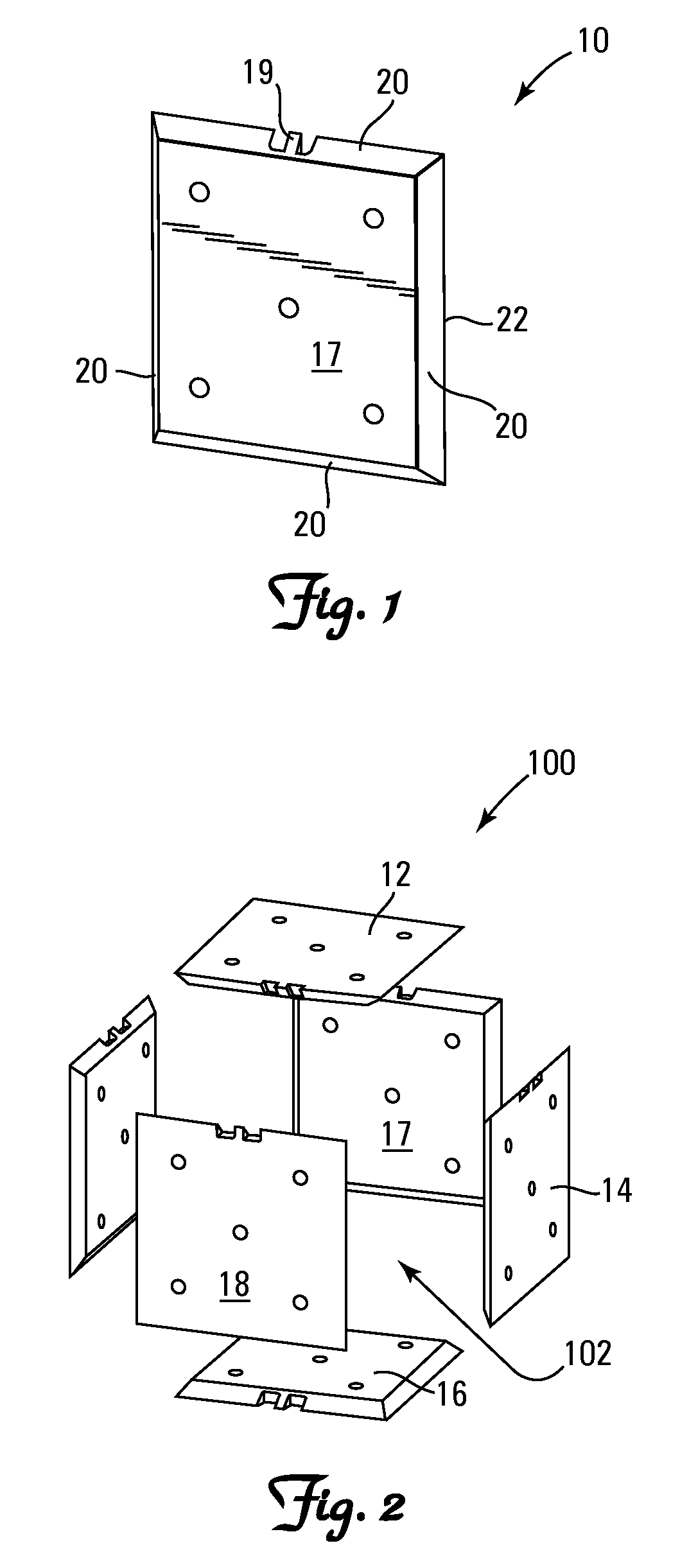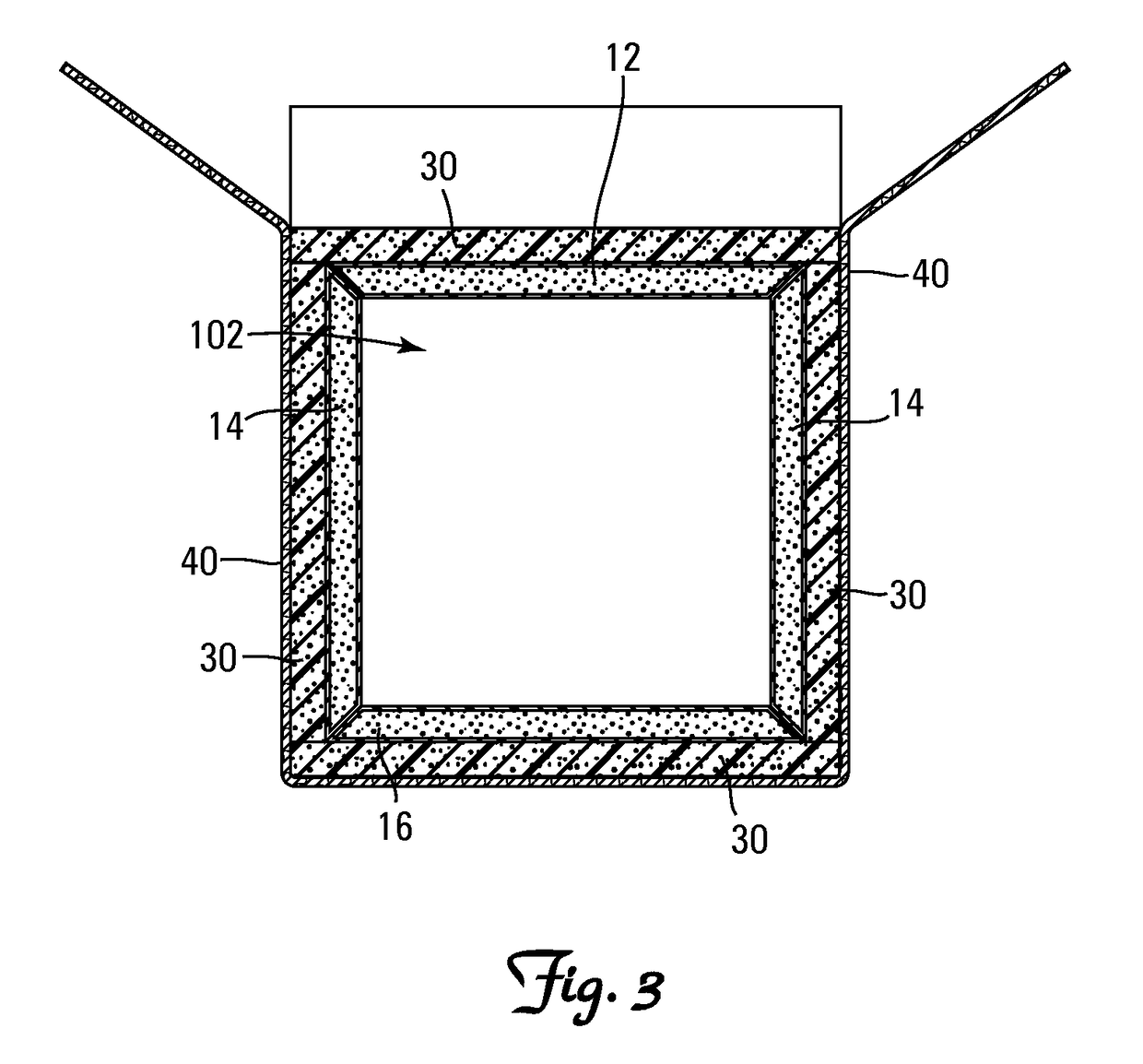Modular cuboidal passive temperature controlled shipping container
a technology of temperature control and shipping container, applied in the direction of domestic cooling apparatus, paper/cardboard articles, lighting and heating apparatus, etc., can solve the problems of difficult transportation of temperature-sensitive goods, high cost, and high cost of temperature control products
- Summary
- Abstract
- Description
- Claims
- Application Information
AI Technical Summary
Benefits of technology
Problems solved by technology
Method used
Image
Examples
Embodiment Construction
[0009]10 Phase Change Material-Containing Panel[0010]12 Top Phase Change Material-Containing Panel[0011]14 Side Phase Change Material-Containing Panel[0012]16 Bottom Phase Change Material-Containing Panel[0013]17 Inner Surface of Phase Change Material-Containing Panel[0014]18 Outer Surface of Phase Change Material-Containing Panel[0015]19 Fill Port Collar (Pinched and Sealed)[0016]20 Beveled Side[0017]22 Panel Edge[0018]30 Thermal Insulation Panels[0019]40 Outer Shell[0020]100 Thermal Insulating Enclosure[0021]102 Thermal Controlled Interior Volume
Construction
[0022]Referring to FIGS. 1-3 the invention is directed to a thermal insulating enclosure 100 comprising a plurality of separate and distinct phase change material-containing panels 10 (hereinafter “PCM panels”) all configured and arranged to form a retention chamber 102. The PCM panel 10 is a frustum of a right pyramid and all four edges 22 of the top 12, bottom 16 and side panels 14 are 45° angles or bevels 20.
[002...
PUM
 Login to View More
Login to View More Abstract
Description
Claims
Application Information
 Login to View More
Login to View More - R&D
- Intellectual Property
- Life Sciences
- Materials
- Tech Scout
- Unparalleled Data Quality
- Higher Quality Content
- 60% Fewer Hallucinations
Browse by: Latest US Patents, China's latest patents, Technical Efficacy Thesaurus, Application Domain, Technology Topic, Popular Technical Reports.
© 2025 PatSnap. All rights reserved.Legal|Privacy policy|Modern Slavery Act Transparency Statement|Sitemap|About US| Contact US: help@patsnap.com



